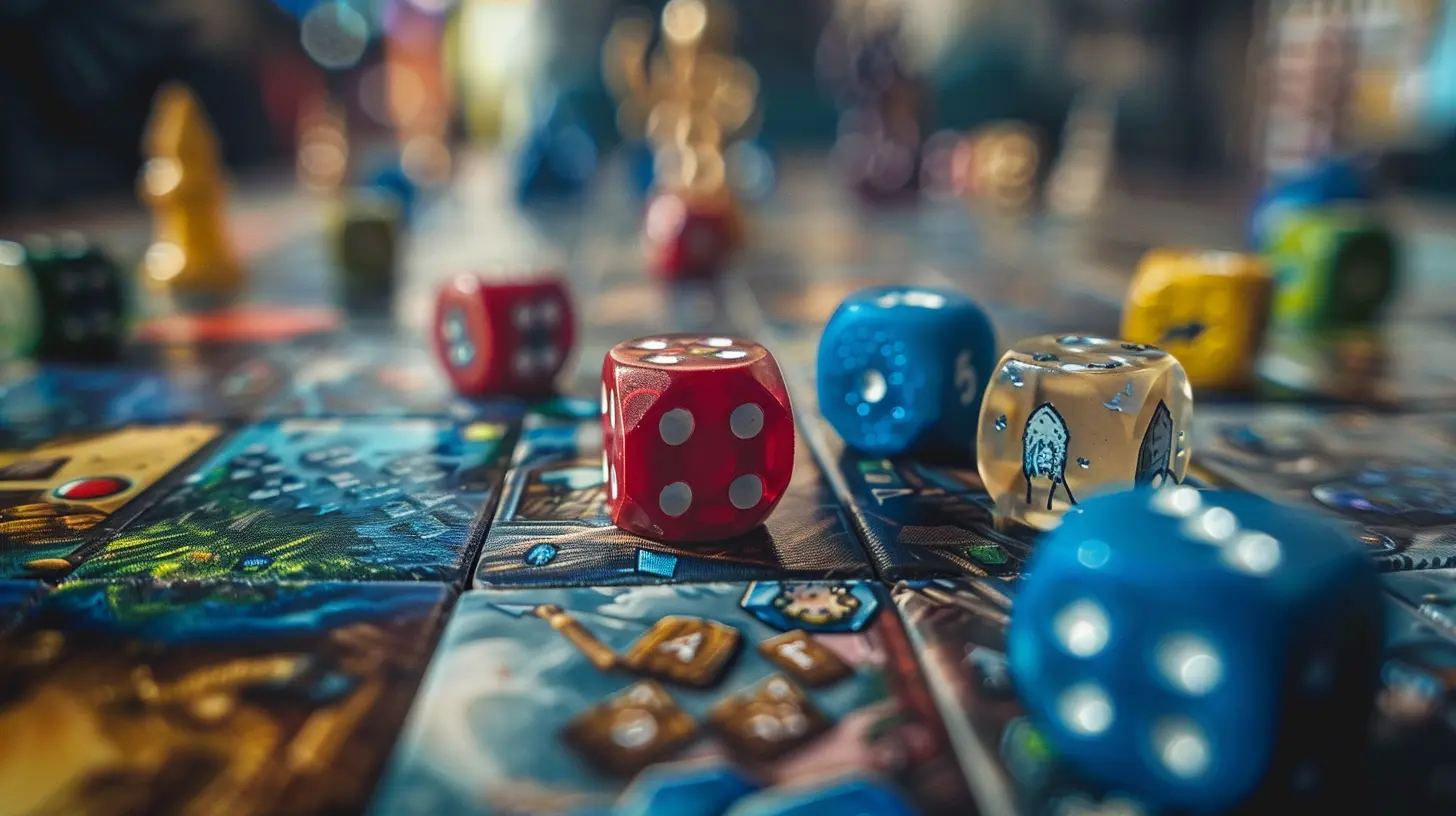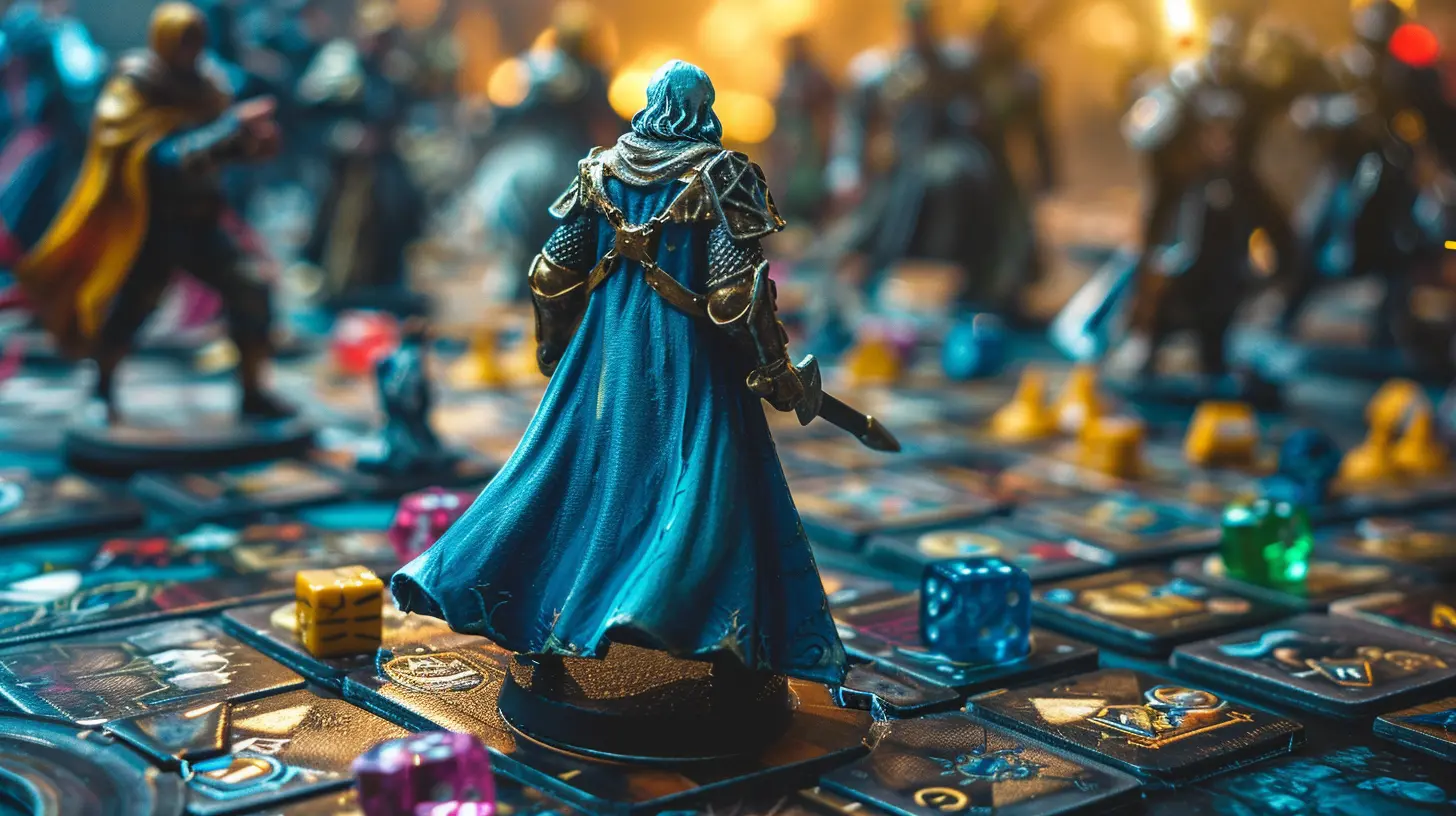Exploring Asymmetry in Board Games: Unique Roles and Powers
26 November 2025
Board games have come a long way from the days of rolling dice and marching tokens across simple tracks. Modern tabletop gaming has evolved into a rich tapestry of mechanics, themes, and strategies, and at the heart of this revolution lies the concept of asymmetry. You’ve probably played a game where everyone starts on equal footing, doing more or less the same things. But what happens when a game gives each player different tools, goals, or abilities? Suddenly, it’s not about following the same path to victory but forging your own. Let me tell you—this is where the magic happens.
Asymmetry in board games isn’t just a gimmick; it’s a design choice that fundamentally changes how you think, strategize, and experience the game. Whether you've dipped your toes into games like Root or Twilight Imperium, or just heard your gaming buddies rave about these titles, it’s worth understanding why asymmetry isn’t just "different for the sake of being different." It adds depth, fosters replayability, and makes every game session unique. Buckle up—this rabbit hole is deeper than you think.
What Is Asymmetry in Board Games?
Let’s break it down. In a symmetrical game, everyone plays by the same rules, with identical starting conditions and abilities. Think Monopoly or Chess. The playing field is as even as it gets, and winning is about mastering the shared system.Now, in asymmetric games, players have different roles, powers, or objectives. This could mean wildly diverse factions battling for dominance (Root), unique player boards that demand tailored strategies (Gaia Project), or even distinct win conditions (Cosmic Encounter). The key idea is simple: no two players are playing the exact same game, even though everyone operates in the same shared world.
Why Asymmetry Works: The Appeal of Unique Roles
Ever feel like you're stuck in a rut playing board games where everybody is just doing the same thing? Asymmetry fixes that. You get to experience the game from a fresh perspective every time you play, often requiring you to flex different strategic muscles. But the benefits go even deeper.It Encourages Creative Problem-Solving
Asymmetric games challenge you to approach problems in ways others can’t. Got a faction that excels in resource generation but stinks at combat? You'll need to outwit your enemies by outproducing them, not outgunning them. This kind of challenge keeps players engaged and invested, as there’s no one-size-fits-all strategy.It Levels the Playing Field
Ironically, giving players different tools can make games feel fairer. If two players at the table have wildly different strengths and weaknesses, it’s harder for one dominant strategy to emerge. Instead, it becomes a contest of adaptability. Sure, some factions or roles might feel more challenging, but seasoned players know: if everyone’s overpowered in their own way, the game balances itself out.
Types of Asymmetry in Board Games
Not all asymmetry is created equal. Some games go all-in, making every detail unique for each participant, while others take a more subtle approach. Let’s dive deeper into how asymmetry shows up in games.Factions and Unique Powers
This is the bread and butter of asymmetric games. In titles like Root or Vast: The Crystal Caverns, players take on roles or factions with completely different abilities, mechanics, and even goals. One player might be managing an economy while another is waging guerrilla warfare. The beauty here is that no two factions feel alike.Take Root, for example. The Woodland Alliance plays a stealthy, revolutionary faction aiming to overthrow rulers, while the Eyrie Dynasties are a rigid empire trying to dominate through military might. Playing as different factions feels like playing entirely different games, yet they all interact harmoniously in the same system.
Variable Player Abilities (VPAs)
Some games take a lighter approach to asymmetry, offering players small but meaningful differences. Games like Scythe excel here—each player starts with unique powers and slight advantages but plays within the same broader framework. This kind of asymmetry strikes a sweet spot for players who want variety without feeling overwhelmed.Asymmetric Objectives
Not every game needs to give players different powers to create asymmetry. Some do it through varying objectives. In Secret Hitler, for instance, liberals aim to pass liberal policies while fascists secretly try to install their leader. The asymmetry lies in the hidden agendas, creating tension and intrigue.Asymmetry in Player Perspective
Here’s an underrated twist: some games create asymmetry not through powers or goals but through how you interact with the game world. In Nemesis, one player might be trying to survive and escape a spaceship, while another secretly works to sabotage the mission without getting caught. Everyone’s in the same story—but not on the same page.
Challenges of Asymmetric Design
Of course, asymmetry isn’t all sunshine and rainbows. Designing (and playing!) asymmetric games comes with its own set of challenges.Balancing Act
If every player has unique powers, making sure no role feels outright stronger or weaker can be a nightmare for designers. Ever played a game where one faction feels like it's on easy mode while another struggles just to keep up? Yeah, that’s poor balancing at work. Designers often iterate endlessly to ensure asymmetry doesn't lead to frustration—and even then, it’s not always perfect.Learning Curve
Let’s face it: asymmetric games can be intimidating. Remember the first time you opened the rulebook for a game like Mage Knight or Spirit Island? It’s like being handed a 500-page novel when all you wanted was a quick read. The depth is fantastic once you get into it, but onboarding new players can be rough.Paralysis by Analysis
With so many unique strategies in play, asymmetric games can lead to decision paralysis, especially for new players. The sheer number of options can make it hard to decide on a course of action, slowing down the game and frustrating everyone.Asymmetry in Action: A Few Standout Games
If you’re ready to take the plunge into the world of asymmetric board games, here are a few classics you should absolutely check out.Root
This one’s a no-brainer. Root is a masterclass in asymmetry, with players taking on vastly different woodland factions. Whether you’re a militaristic bird empire or a sneaky underground rebellion, each faction feels like its own mini-game. The interdependence between factions creates a dynamic, evolving game state that keeps things interesting.Twilight Imperium
Got 8 hours to spare? (Kidding—not kidding!) Twilight Imperium offers a galaxy of possibilities, with each player controlling a unique species or empire. From political intrigue to space conquest, every faction demands a completely different approach.Spirit Island
In Spirit Island, players embody spirits defending an island from colonizing invaders. Each spirit has its own powers and playstyle, from controlling the natural elements to scaring invaders off the map. It's a cooperative game, but the asymmetry ensures that no two players approach the problem the same way.Why You Should Give Asymmetric Games a Try
Still on the fence? Let me ask you this: Do you like variety? Do you enjoy solving puzzles where the solution isn’t obvious? Do you want a new gaming experience every time you sit at the table? If you answered "yes" to any of these, asymmetric board games are calling your name.Think of it like a buffet, where every dish is crafted to perfection but offers a completely different flavor. Whether you love the cerebral challenge of mastering a specific faction or just want to shake up your usual board game night, asymmetric games have got you covered.
Final Thoughts
Asymmetry in board games is proof that fairness doesn’t have to mean sameness. By giving players unique roles, powers, and perspectives, designers open up a whole new world of replayability and strategic depth. Sure, they can be a bit overwhelming at first, and yes, the learning curve is real. But once you dive in, it’s hard to go back to the cookie-cutter experience of symmetrical games.So, the next time someone suggests a game where players aren’t all equal, don’t roll your eyes—embrace the chaos. Who knows? You might just find your new favorite way to play. After all, life’s too short for boring board games.
all images in this post were generated using AI tools
Category:
Board GamesAuthor:

Avril McDowney
